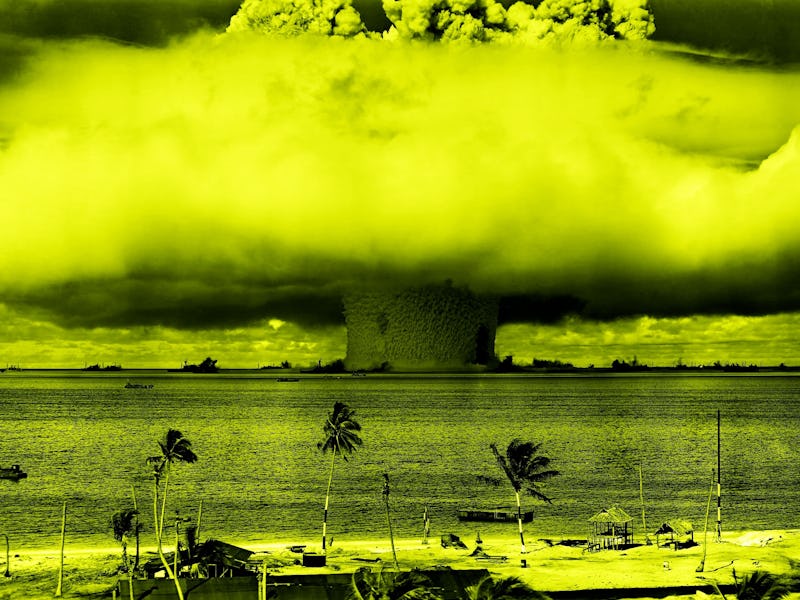How to Survive a Nuclear Explosion Like a Scientist
You have a limited amount of time.

On Thursday, President Donald Trump announced that his promise to release “fire and fury like the world has never seen” on North Korea was maybe not “tough enough”. According to experts, North Korea is in possession of an intercontinental ballistic missile that appears capable of hitting the United States’ West Coast, and the secretive nation has also announced that it’s “carefully examining the operational plan” to fire its “medium-to-long-range strategic ballistic rocket Hwasong-12” at the U.S. military bases in Guam.
While North Korea threatening the United States with nuclear weapons is nothing new, its possession of a missile that can reach the U.S. mainland is a milestone development that has people frantically googling “how to survive a nuclear attack.” According to recent mathematical models, doing so is way more complicated than the 1950s advice of “duck and cover.”
A 1951 nuclear test in Yucca Flat, Nevada
In a 2014 analysis published in Proceedings of the Royal Society, Lawrence Livermore National Laboratory atmospheric scientist Michael Dillon, Ph.D., explained how to minimize fallout radiation exposure in the event of a low-yield nuclear detonation. That is, of course, if you survive the initial explosion and nuclear radiation, which releases energy “distributed roughly as 50 percent shockwave, 35 percent heat, 5 percent initial nuclear radiation, and 10 percent fallout radiation,” a fact-sheet created by the National Academies and the U.S. Department of Homeland Security notes.
If you can survive that, Dillon says that you should take shelter in the nearest and most protective building. But because not everyone has easy access to houses with basements, large multi-story structures, parking garages, and tunnels (which experts say can reduce doses from a fallout by a factor of 10 or more), the question for many will inevitably end up being: How long should I stay in this bad hideout before moving to a better one without putting myself in a worse situation?
According to Dillon’s math, this choice doesn’t have to be a gamble. His models, which factor in transit time and the spatial pattern of fallout radiation, conclude that if you are in a bad shelter and can reach an adequate shelter within five minutes, you should immediately evacuate to that shelter. However, if you can’t get to an adequate shelter within 15 minutes, you should wait 30 minutes after the detonation before evacuating. Then, you need to get the hell out of there.
Dillon argues that effectively employing these response strategies within the first hour after an attack can save between 10,000 to 100,000 people from fatal exposure to fallout radiation.
A schematic of response strategies
His model differs from previous nuclear fallout advice because it is more “consistent with respect to the timing and conditions under which individuals should leave their shelters either to evacuate from fallout-contaminated areas entirely or to transit to a higher quality shelter.” While his work has been criticized by some research scientists who argue that, in the aftermath of a nuclear war, we can’t be certain how long transit time will be, Dillon argues that his models are an effective way to help reduce fallout doses for the more than 20 percent of Americans who do not have access to a basement.
A higher number means more protection.
Should a blast occur while people are outside, the U.S. Department of Homeland Security recommends that you lie face down on the ground while protecting exposed skin when the shock waves pass, and cover your mouth and nose with a cloth to filter particulates from the inhaled air. Then, it’s time to seek shelter: If a mushroom cloud isn’t visible or the direction of the fallout isn’t known, get into the best shelter you can as soon as possible. If debris is moving towards you, then move in a route perpendicular to the path of the fallout.
To save your life in this dire situation, it’s most important to get away from fallout radiation — and if you’re not living in Antartica when the apocalypse comes, it may be time to cozy up to some survivalists.